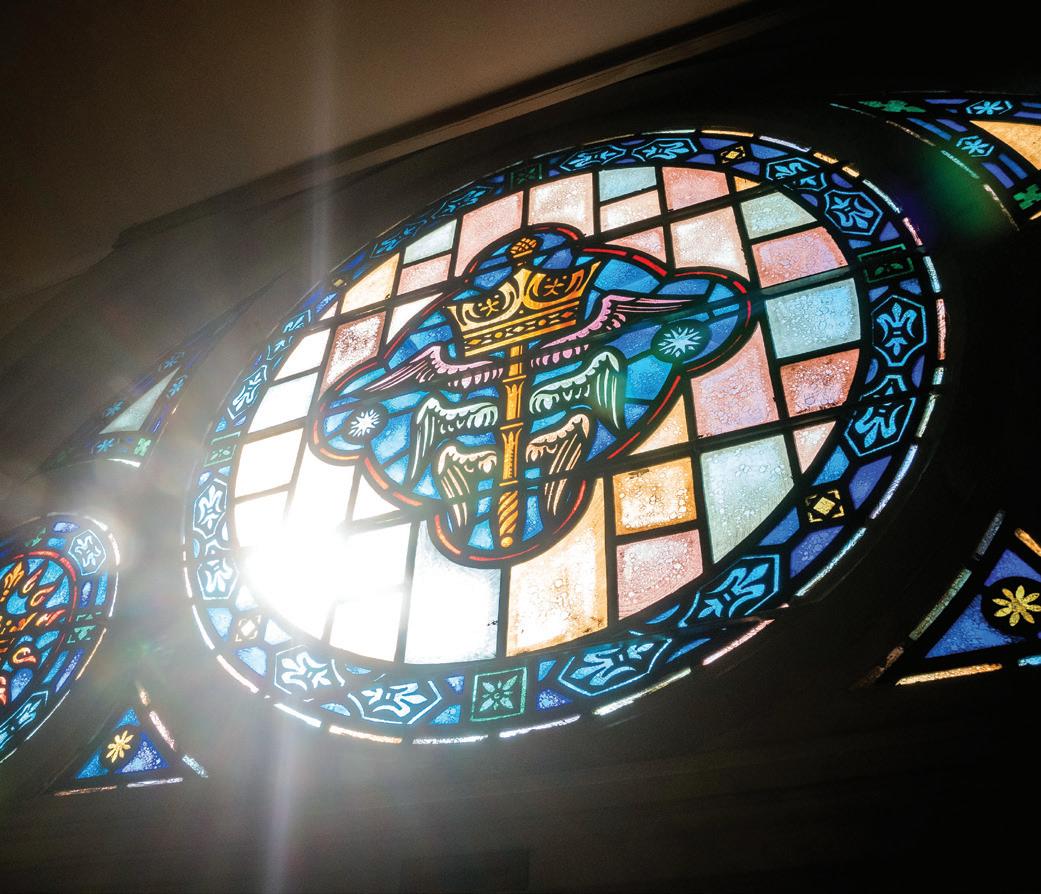
9 minute read
House of God | Immaculate Conception Parish, Montrose
By Ashlie Hand Photos by Cory Thomason
House of God
Immaculate Conception Parish, Montrose
Immaculate Conception Parish in Montrose has stood for 110 years, built in part by the hands of its parishioners. Established in 1879 when the Missouri, Kansas and Texas Railway laid its right of way from Nevada to Sedalia, drawing new residents to the town of Montrose, the parish first gathered in a small frame church. A new brick church was built and used for Masses starting in October 1887. Ground was broken on the current church in October 1911 and was dedicated by Bishop Lillis in November 1912. Over the years, parishioners and pastors have faithfully maintained the church, retaining nearly all of its original architectural features.
Quite possibly the most distinguishing features of Immaculate Conception Parish are its stained-glass windows and original altar. Both command awe and reverence upon entering the worship space.
Father Michael Coleman, JCL (1942-2022),
former archivist for the Diocese of Kansas CitySt. Joseph, is the author of Further by Faith (2014), which explores and celebrates the art and architecture of the diocese.

Watch a video tour
of Immaculate Conception Church and see additional images at catholickey.org.
Immaculate Conception Parish seats 500 people and was designed in the Roman Basilica style. The architect was Stauder & Sons in St. Louis and the general contractor was John Heckman based in St. Charles. It features two towers, at 120 feet high and 80 feet high. The exterior glass protecting the large St. Cecilia rose window was recently restored to allow light to pass through and increase its visibility from the outside.
The six stained-glass windows in the nave and the rose windows in the transepts were installed in 1938, designed by Deprato (now Deprato-Rigalli, based in Chicago). The remaining windows were installed when the church was built in 1911 and were purchased from Munich Studios.
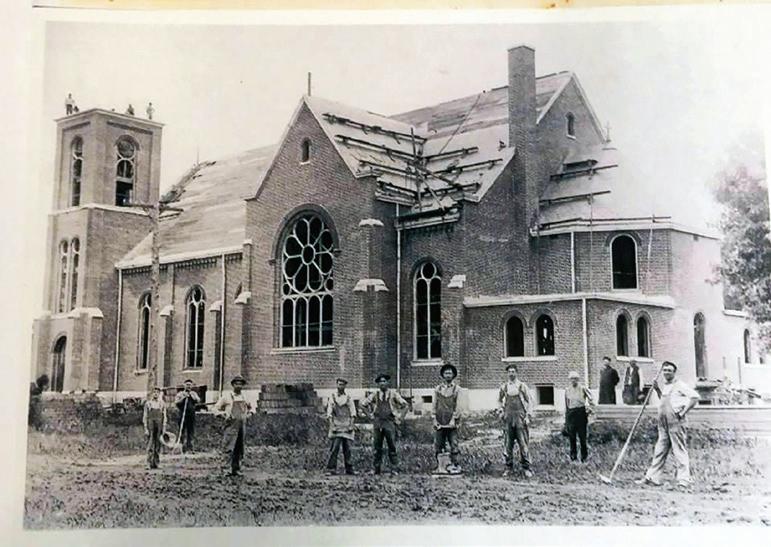
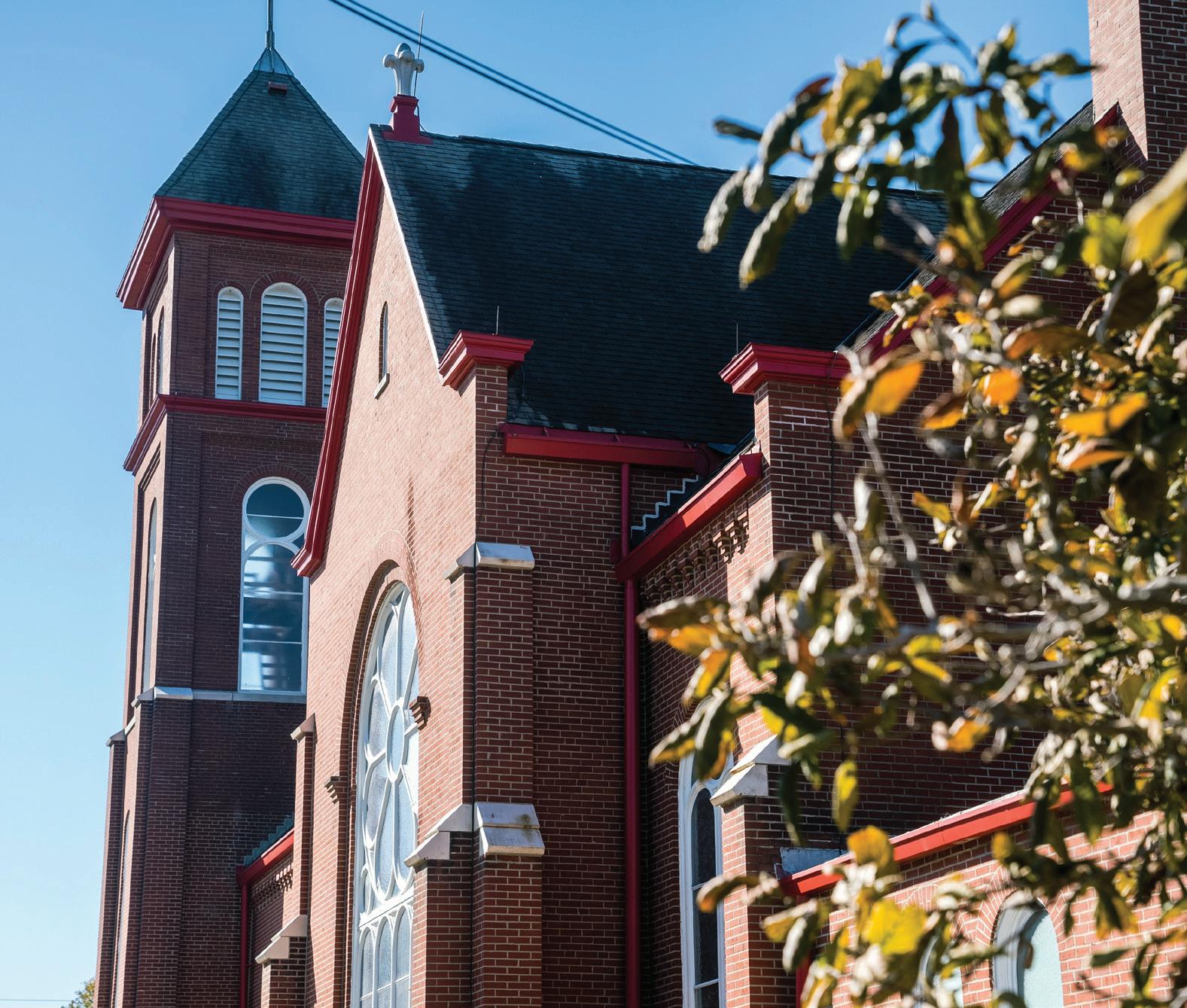
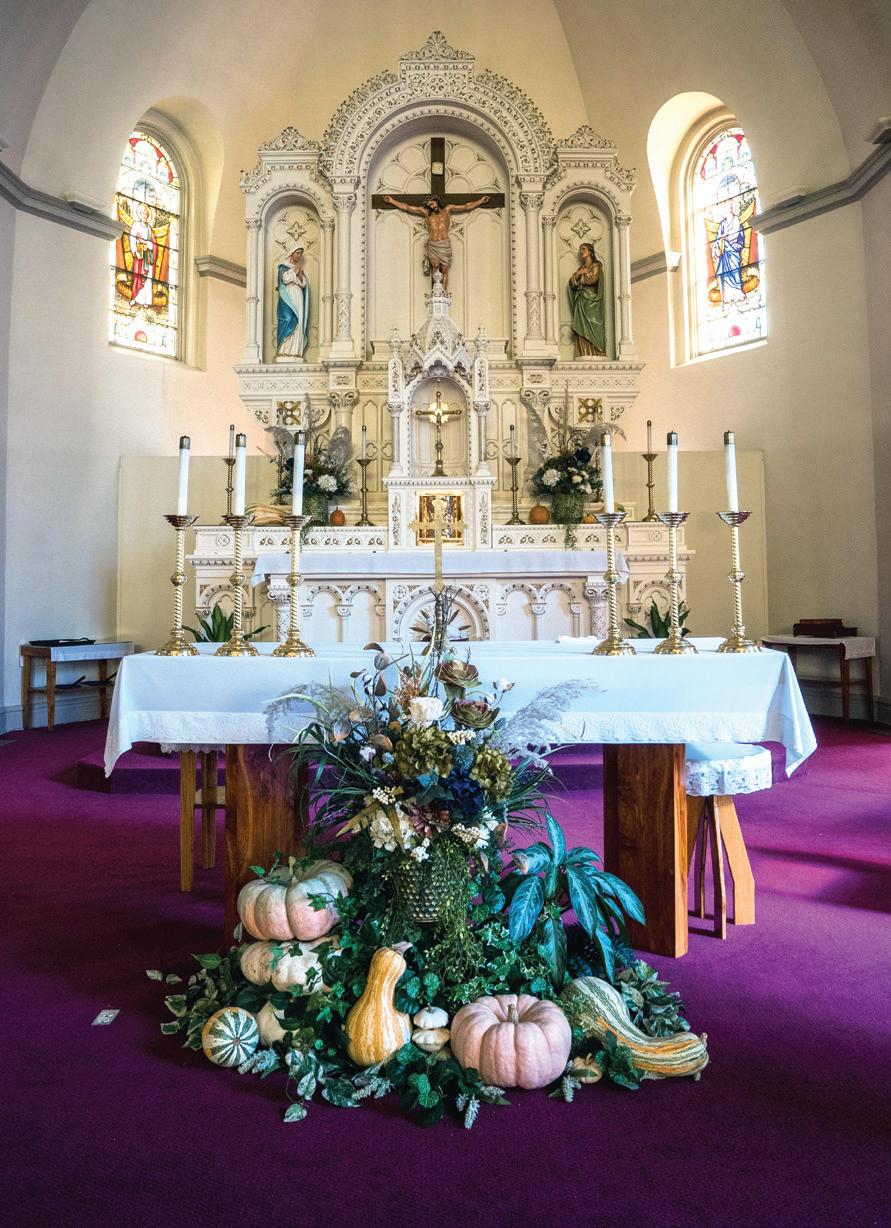
Traveling all over Europe, Father Jason Koch served as a missionary before he was incardinated in the Diocese of Kansas City-St. Joseph in 2011. Pastor of Immaculate Conception Parish since 2018, he discovered he has family who were members of the parish dating back to the time that the new rail line was being built in Montrose.
The high altar is original to the church, minus a crowning piece that featured two additional angel statues. The statues have been recently repainted, in addition to regular restoration of the intricate details. The small nook that currently holds the cross is typically where the monstrance is displayed during Eucharistic Adoration. On either side of the altar is the Blessed Mother and St. John in their positions at the foot of the cross.
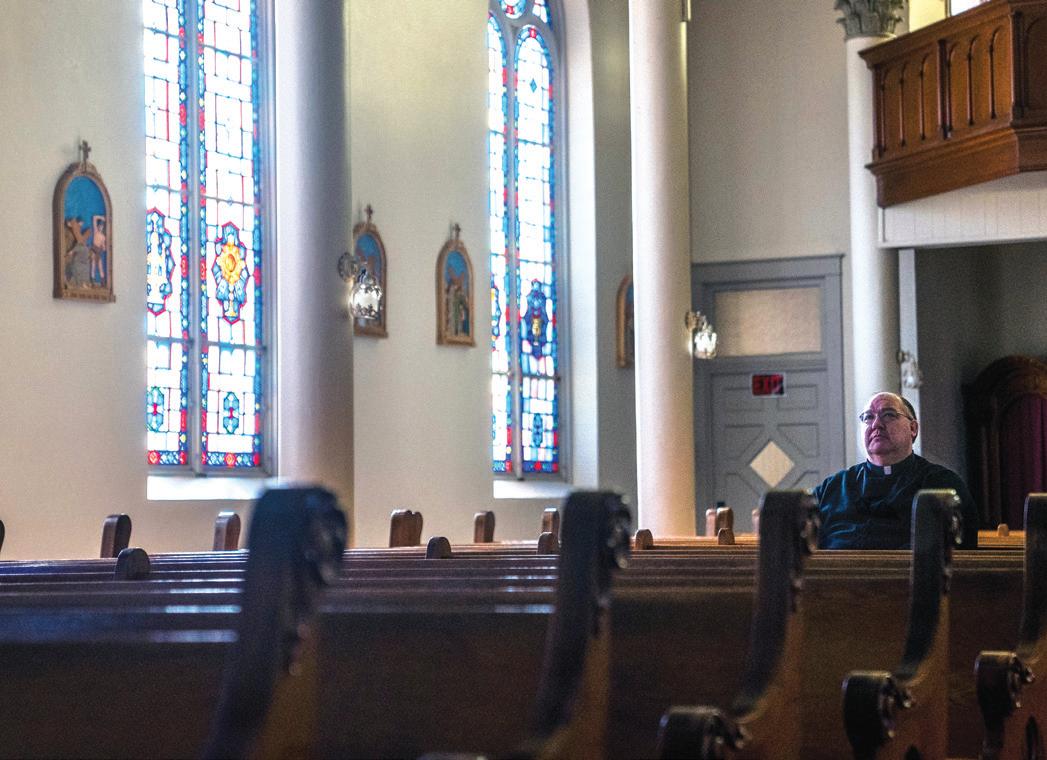
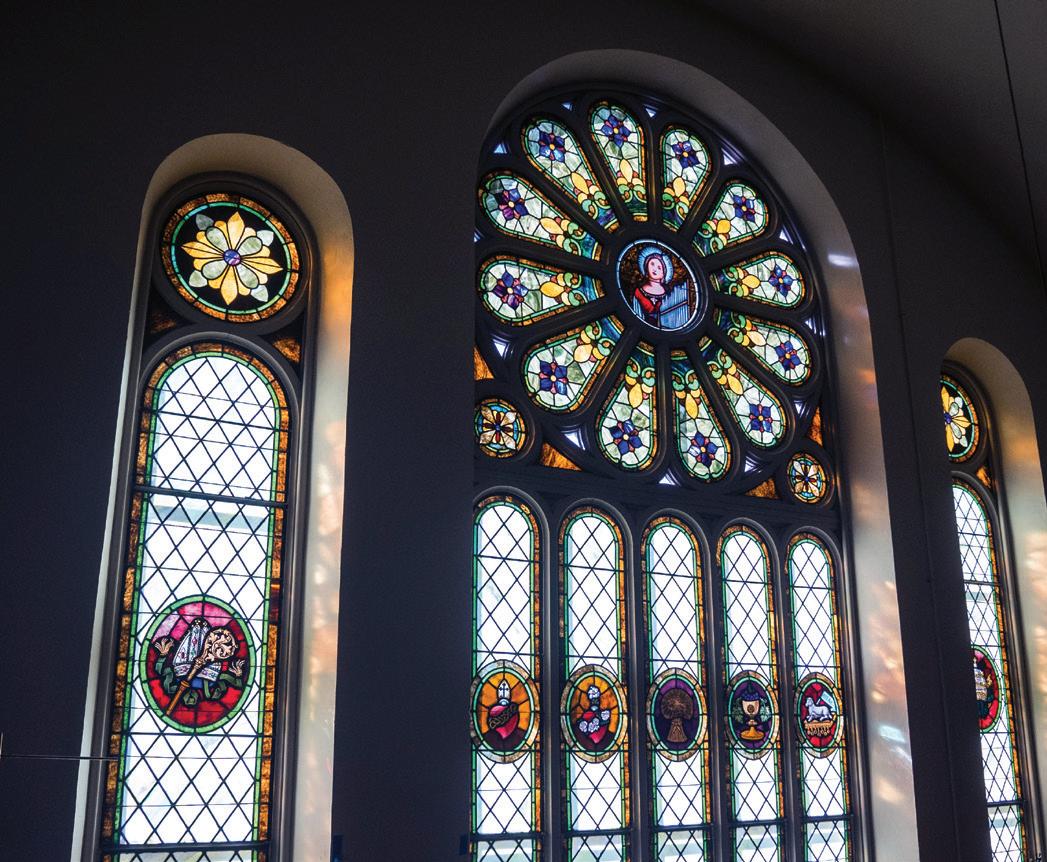


Left: Here is the Holy Family on a typical day, reminding us of the importance of work and that each of us has a role to play. This is a favorite of Father Koch’s because “the domestic Church reflects the love and the trinity of the Holy Family and the way they serve each other.” Right: In this window, you see Mary being presented in the Temple by her parents, Joachim and Ann. Mary lived, worked and prayed in the Temple as a young girl, until she was about 16.
The symbols of the bishop and papacy serve as the foundation for the image of St. Cecilia, appropriately positioned in the choir loft as the patron saint of musicians. The symbols of the Eucharist align along the bottom, joined by symbols of Mary. The choir still sings from this location on holidays and special feast days.
The rounded windows and the repetitions of circles create a rhythm throughout the church and, architecturally, allow the windows to sustain the weight of the structure around them. The windows have a Marian motif where the color blue dominates. This window rises above the current location of the parish choir and depicts “The Annunciation,” when the Angel Gabriel appeared to Mary and announced that she was to become the Mother of God.
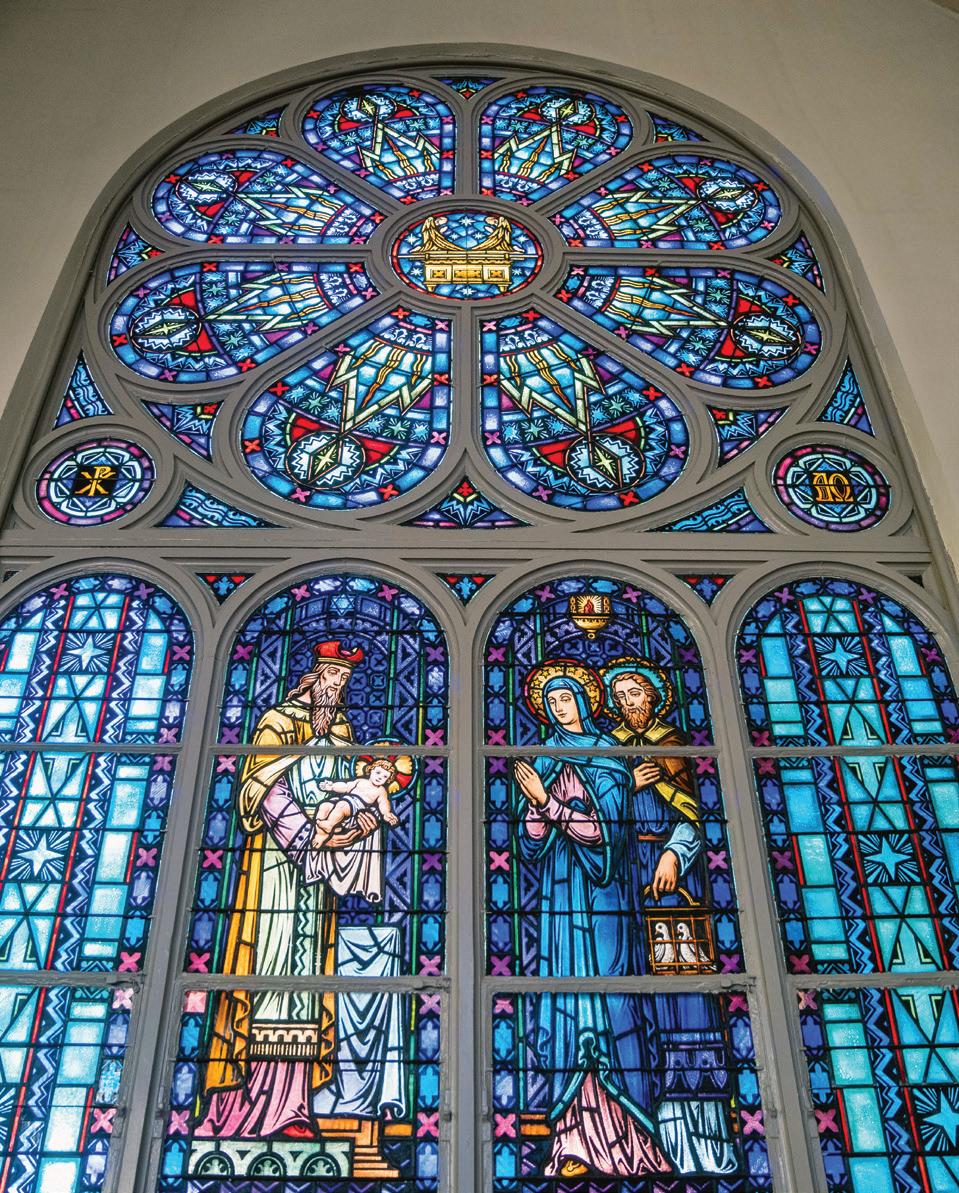
This large rose window rises above the original baptismal font and depicts “the Presentation of the Child Jesus in the Temple,” commemorating the Jewish tradition of presenting the first-born son in the Temple on his 40th day of life. When Mary and Joseph presented the infant Jesus to Simeon, he proclaimed him to be the promised Messiah.
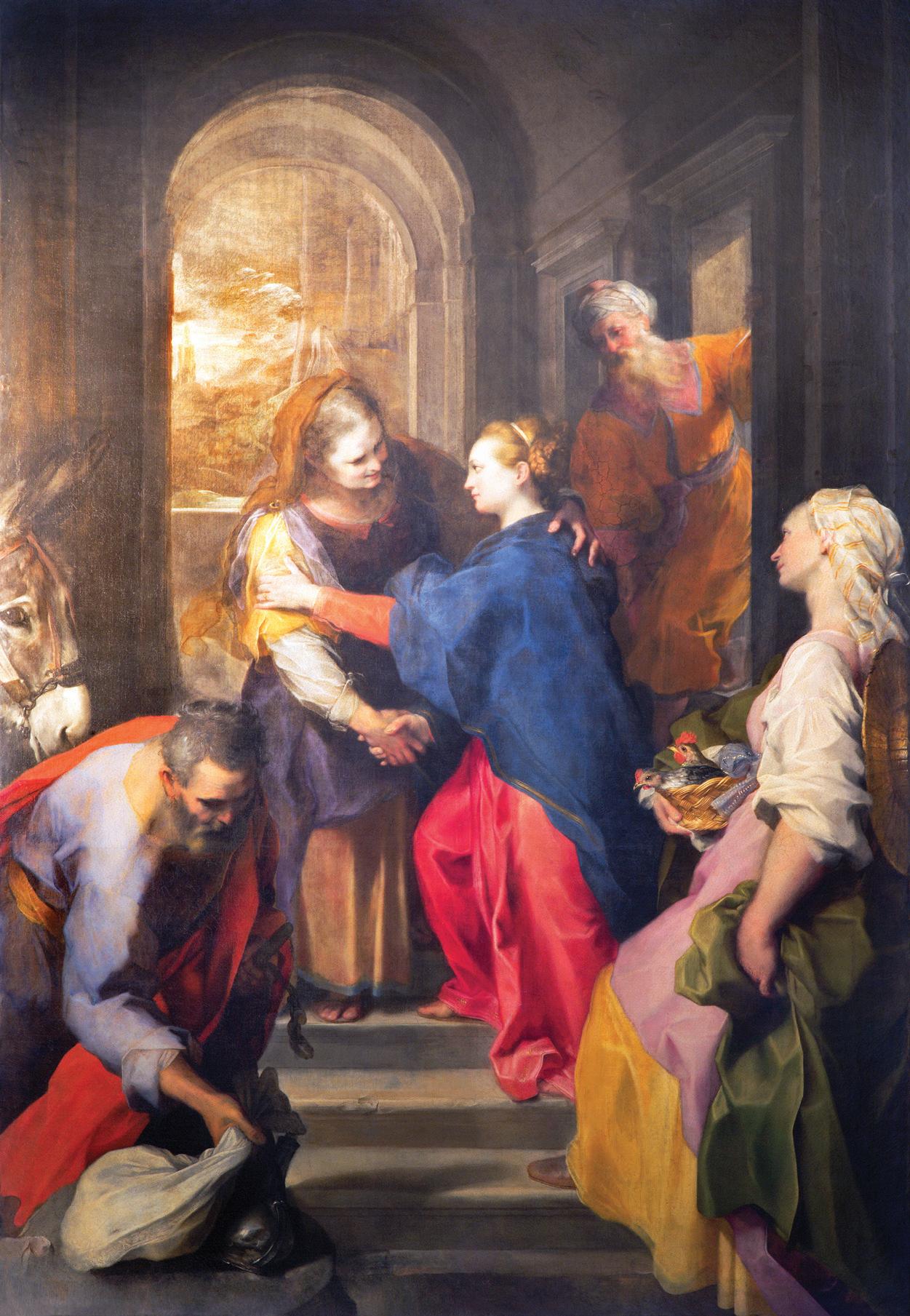
Living Advent with Our Lady, in silence and in service, with Caryll Houselander’s The Reed of God

Whenever the season of Advent begins, I turn to Caryll Houselander’s beautiful book on Our Lady, The Reed of God. She helps me to draw close to Our Lady, to the quiet and active time when Christ was being formed in her womb. She invites us to contemplate: “Our life has been given to us from generation to generation, existing in each age in the keeping of other human beings, tended in the Creator’s hands, a little flame carried through darkness and storm, burning palely in brilliant sunlight, shining out like a star in darkness, life in the brave keeping of love given from age to age in a kiss.” (27)
Mary was completely attuned to God. In Mary’s visitation to her cousin Elizabeth, “we can feel the rush of warmth and kindness, the sudden urgency of love that sent that girl hurrying over the hills ... days in which Christ was being formed in her, the impulse was His impulse.” (61)
Advent is a time for hidden growth and works of mercy. Just as Christ was formed in the womb of Mary, “If Christ is growing in us, if we are at peace, recollected, because we know that however insignificant our life seems to be, from it He is forming Himself; if we go with eager wills, ‘in haste,’ to wherever our circumstances compel us, because we believe that He desires to be in that place, we shall find that we are driven more and more to act on the impulse of His love.” (62) The more we respond, the more we will be able to be attentive to the inspirations of the Holy Spirit.
We are asked, like Mary, to bring Christ to others, for: “We must be swift to obey the winged impulses of His Love, carrying Him to wherever He longs to be; and those who recognize His presence will be stirred, like Elizabeth, with new life. They will know His presence, not by any special beauty or power shown by us, but in the way that the bud knows the presence of the light, by an unfolding in themselves, a putting forth of their own beauty.” (63) This Advent, may we pray in silence with Mary, and carry Christ’s light within us. May those we encounter find their hearts stirred, for: “It seems that this is Christ’s favorite way of being recognized, by the quickening of His own life in the heart, which is the response to His coming.” (63) Mother Maria Stella of the Merciful Heart of Jesus, CJD www.cjd.cc
SOMEONE WORTH CELEBRATING
We didn’t actually mean for it to happen,
but there we were. Drummers directed the dance troupe in front of us. Peacock feathers bobbed back and forth as the sun glimmered off the costumes of the dance troupe behind us. We were in the middle. Dressed in normal street clothes. Looking decidedly less than flashy — unprepared. But we were asked to join the procession like everyone else. So, we did.
Our children questioned if we belonged.
I said, “Of course we do! We’re Catholic, aren’t we?” I mean, they couldn’t dispute that. We WERE there to celebrate Our Lady of Guadalupe’s Dec. 12 feast day. It is what our family has done in the last few years. So, I figured this was how we were going to do it this year.
Our Lady of Guadalupe’s story is one that points to God breaking through human darkness and fault by showing his light in a way uniquely designed for us to understand. She’s often associated with Mexican culture, but she’s actually the patron saint of all of North America. When I found that out, I was all in.
The short Our Lady of Guadalupe story involves Mary appearing to a peasant named Juan Diego in the years after the Spaniards brought cruelty and harsh treatment to the Aztec people. Not surprisingly, the locals had not widely accepted the Faith. Juan Diego was just walking along one day when he ran into Mary. She said, “Hey there, just wanted you to know my son Jesus IS for you. He IS who you all have been looking for. You belong.”
After a series of events, Mary’s image appeared on Juan Diego’s cloak. Its symbolism spoke right to the Aztec heart. They could “read” the image as God’s message of victory over their cruel gods. The locals got the message loud and clear.
In the decade after Our Lady of Guadalupe appeared, an estimated nine million Aztecs decided to follow Jesus. It was the largest Christian conversion in the history of the world.
I find that worth celebrating. So, we do.
As Catholics, we can tap into so many stories that inspire. It’s a great way to bring your kids together and let God help build your family narrative.
In every season, saints are waiting to come alongside in your family life and parenting. I encourage you to find one — or more — who your family can celebrate. I have a friend who makes stigmata cookies on Padre Pio’s feast day. Another has special meals each feast day of the saints her children are named for. Bring it home. It can be simple. I like to turn on a livestream of the million or so people who visit the image of Our Lady of Guadalupe every Dec. 12. Find creative ways. Sometimes God might call you to be more adventurous, too. Ask Him to surprise you with family moments not to be forgotten.
Instead of watching, join in. You belong. You’re Catholic, aren’t you?
Karen Ridder
is a parishioner at St. James Parish in Liberty and a convert to the Catholic Faith. She graduated from the University of Missouri School of Journalism and has written for numerous publications in the Kansas City area. Karen and her husband Jeff have three sons and a daughter.
As Catholics we can tap into so many stories that inspire. It’s a great way to bring your kids together, and let God help build your family narrative.










